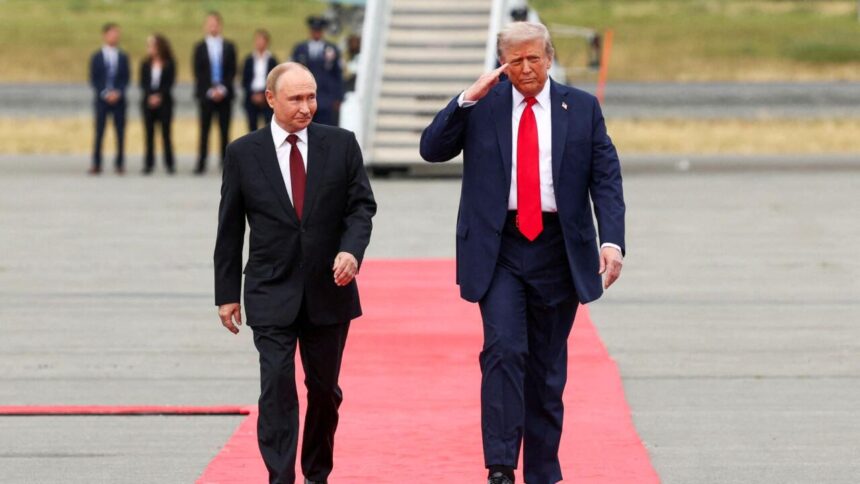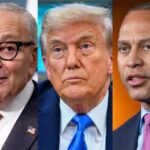The White House has tempered expectations ahead of the much-anticipated summit between President Donald Trump and Russian President Vladimir Putin. Officials signaled that while the meeting aims to address critical bilateral issues, meaningful breakthroughs should not be anticipated. This cautious stance reflects ongoing complexities in U.S.-Russia relations and underscores the challenges both leaders face in seeking progress on contentious topics.
White House Signals Tempered Goals for Upcoming Trump Putin Meeting
The White House has adopted a more cautious stance ahead of the highly anticipated summit between President Trump and Russian President Vladimir Putin. Officials have emphasized that they are not expecting any groundbreaking agreements, signaling a pragmatic approach to what has often been a complex and sensitive diplomatic relationship. Rather than aiming for sweeping breakthroughs, the focus will be on maintaining open dialog and managing existing tensions between the two powers.
Key points highlighted by the administration include:
- Limited scope: Discussions will center mainly on strategic arms control and regional conflicts.
- Incremental progress: Emphasis on small steps rather than major policy shifts.
- Maintaining balance: Ensuring U.S. interests are protected while opening channels of communication.
- Watchful diplomacy: Careful monitoring of Russian actions in Ukraine and Syria as a backdrop to talks.
| Topic | Expected Approach | Potential Outcome |
|---|---|---|
| Arms Control | Negotiations on extension of treaties | Limited agreements on verification |
| Ukraine Conflict | Diplomatic assurances sought | Continued dialogue without ceasefire guarantee |
| Cybersecurity | Outlining principles | Framework discussions with no binding commitments |
Analysis of Key Challenges Facing the Trump Putin Summit
Diplomatic tensions and a legacy of mistrust have cast a long shadow on the forthcoming summit between Donald Trump and Vladimir Putin. The White House’s tempered expectations underscore the complexities at play, ranging from unresolved issues surrounding electoral interference allegations to contrasting geopolitical agendas in regions like Syria and Ukraine. Even as both leaders express willingness for dialogue,deep-seated skepticism persists within U.S. political circles regarding the tangible outcomes such a meeting might yield.
Several core obstacles impede progress, including:
- Mutual Accusations: Continued finger-pointing over cyber-attacks and election meddling diminishes trust.
- Policy Discrepancies: Vast differences on arms control, NATO’s role, and sanctions.
- Public and Congressional Scrutiny: Intense media coverage and bipartisan skepticism restrict adaptability for concessions.
- External Pressures: Allies’ apprehensions and international expectations add layers of complication.
| Key Challenge | Impact | Likelihood of Resolution |
|---|---|---|
| Electoral Interference Allegations | Deepened mistrust; diplomatic roadblocks | Low |
| Arms Control Agreements | Potential risk of escalation without accord | Moderate |
| Sanctions and Economic Pressures | Economic leverage complicates negotiations | Low |
Expert Recommendations for Managing Diplomatic Risks
In the complex arena of international diplomacy, experts urge administrations to prioritize clarity and recalibrate expectations ahead of any high-profile summits. This approach minimizes the fallout from unmet promises and helps maintain a steady diplomatic course.Experts recommend focusing on clear communication channels across all levels of diplomacy and fostering backdoor dialogues to address contentious issues quietly before they escalate on the public stage.
Additionally, a balanced diplomatic strategy must include rigorous risk assessment and contingency planning. Utilizing multi-layered frameworks enhances the ability to respond swiftly if talks falter. The table below outlines key focus areas recommended by leading diplomatic advisors:
| Focus Area | Recommended Action | Expected Outcome |
|---|---|---|
| Risk Assessment | Regularly update threat matrices | Reduced strategic surprises |
| Crisis Communication | Establish rapid response teams | Contain misinformation |
| Expectation Management | Issue calibrated public statements | Minimize public disillusionment |
Implications of Lowered Expectations on US Russia Relations
Adjusting the perceived stakes of the upcoming summit, the White House’s tempering of expectations signals a cautious approach toward US-Russia diplomacy.This recalibration is likely to steer the public narrative away from ambitions of breakthrough agreements to more pragmatic, incremental dialogues. In the short term, this tempered outlook could reduce tensions by managing disappointment and avoiding the pitfalls of overpromising across media and political forums.
- Mitigated Media Hype: Lower expectations curb sensationalism and foster a more measured public discourse.
- Strategic Ambiguity: Creates room for face-saving on both sides if talks do not yield immediate results.
- Focus on Process: Emphasizes dialogue continuity rather than grand gestures.
However, in the longer term, this signal could have mixed implications.While it may prevent hardening of attitudes on either side if outcomes fall short, it risks normalizing a status quo characterized by persistent mistrust and stalled negotiations. Observers will closely watch whether this pragmatic posture translates into sustained engagement or entrenched diplomatic inertia, especially given the complex geopolitical landscape surrounding US-Russia relations today.
| Potential Impact | Short-Term Effect | Long-Term Effect |
|---|---|---|
| Public Perception | Calmer expectations, reduced backlash | Risk of apathy or skepticism over diplomacy |
| Diplomatic Strategy | Flexible negotiations, lower pressure | Possible stagnation without bold initiatives |
| Policy Making | Incremental progress emphasis | Challenges in addressing critical bilateral issues |
In Retrospect
As the Trump-Putin summit approaches, the White House’s tempered expectations signal a cautious approach to what many anticipate will be a complex and closely scrutinized encounter. While hopes for significant breakthroughs remain guarded, the forthcoming meeting underscores the ongoing importance—and challenges—of U.S.-Russia relations on the global stage.Observers will be watching closely to see whether the summit yields tangible results or simply reiterates longstanding divisions.









